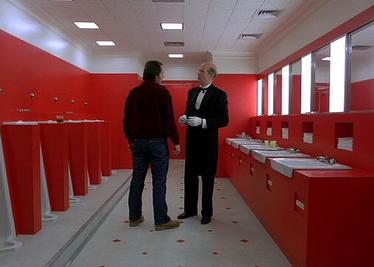The 180 Degree Rule
The 180 degree rule is extremely important technique to use in continuity editing. If two characters are talking face to face, for example, there is an imaginary line which runs through the middle of them as labelled as "Line of Vision" in
Figure 1 below.
 |
| Figure 1 |
Whilst filming, any cameras used
must all be placed on the
same side of the line. This is because the characters will all be on the same side on every cut, meaning that the spectator can understand where the characters are and can focus on the story happening. If the rule is broken and a camera is placed on the other side of the Line of Vision, the characters switch sides which can be confusing and disorientating for the spectator if it is not used as part of the storytelling (
Figure 2).
 |
| Figure 2 |
Breaking the 180 degree rule also breaks 'Eyeline Match', meaning that the characters in the example will look like they're talking to thin air rather than each other. This would make it unclear to the spectator about what the character is looking at or talking to and makes the storyline and dialogue hard to follow. Keeping to the rule allows the spectator to become more involved in the action happening on screen.
However, there are times when the 180 degree line can be crossed and the rule broken. For example, crossing the line in one continuous take means that the spectator is brought along with the camera, losing the disorientating effect because of the lack of cuts so there isn't an issue. Another time the rule can be broken is to purposefully create that disorientating effect on the viewer, especially when shocking news in the story has been revealed. For example, in the film 'The Shining', the switching of the sides showed the spectator that the two characters were the same people (as shown in Figures 3 & 4 below).
 |
| Figure 3 |
 |
| Figure 4 |











